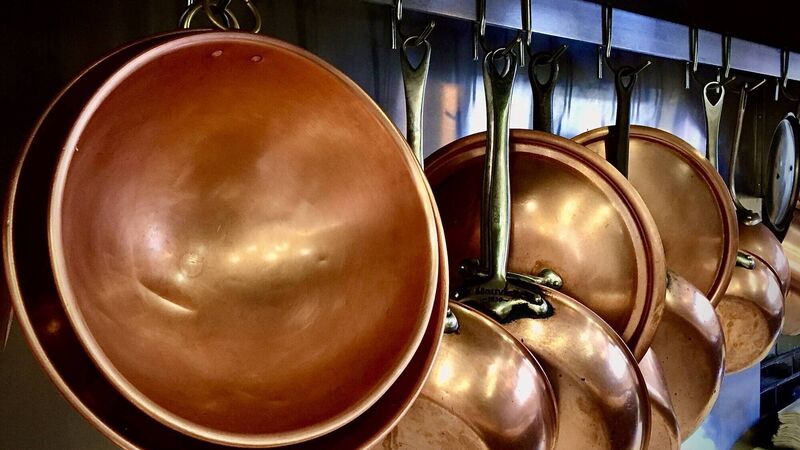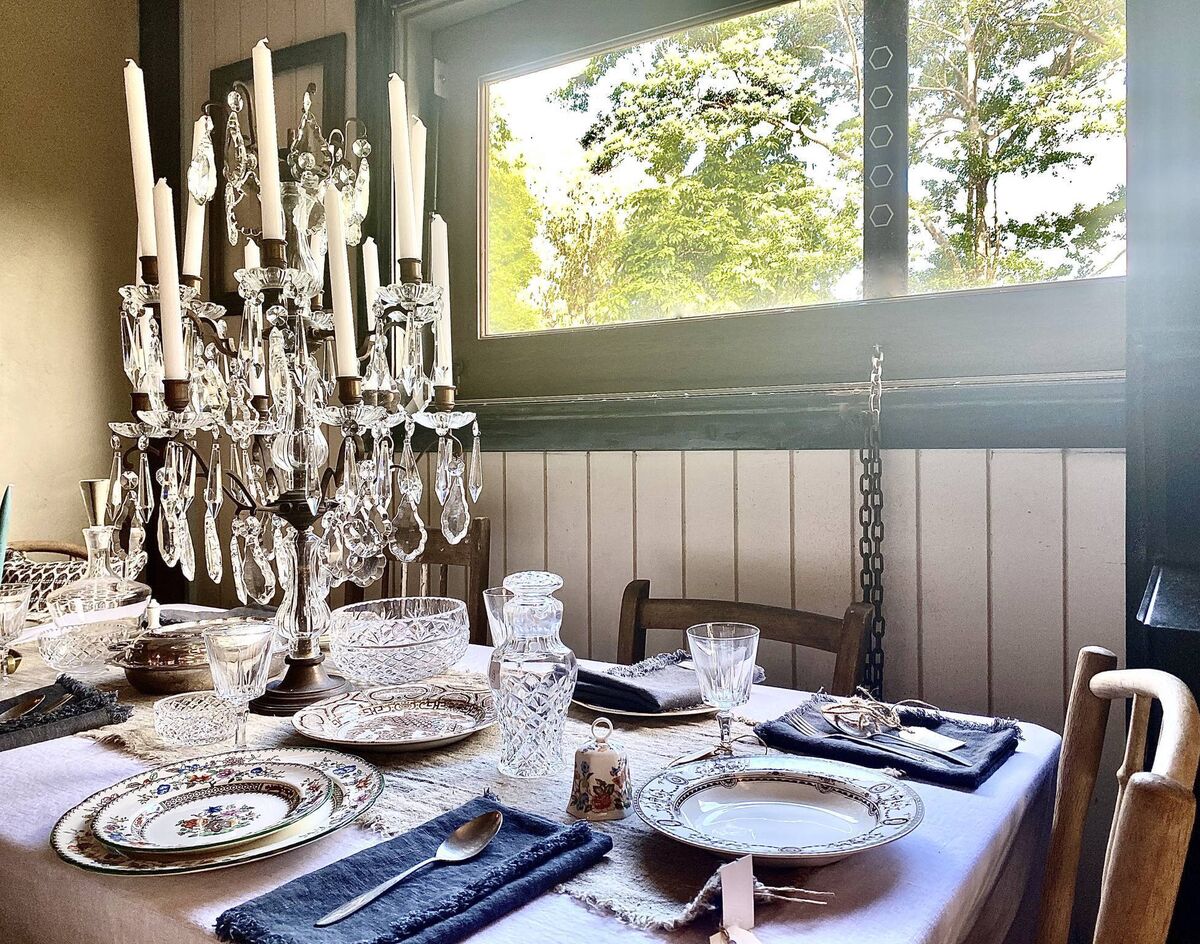What antique and vintage buys are best left on the shelf?

All copper cookware and food storage pieces must be lined with an unbroken layer of tin or stainless steel. If you want to use them as decorative pieces, there’s no issue, otherwise buy something new instead. Picture: iStock
I’m wincing here crouched at the keyboard at the memory of a small “hospital” of failed up-cycling projects that ended up back in the final lots of our local general auction.
Things are not worth buying simply because they are old, and not all things will suit your situation or skill set.
Mercury barometers, arsenic-dyed fabric and genuine ivory might seem obvious no-nos, but here are just some other, less expected vintage buys also best avoided.
CHILDREN’S ITEMS AND TOYS
Having seen a small baby go backwards onto a flagstone floor in an old country-made oak high chair, I can’t emphasise enough: Don’t buy in vintage or antique children’s furnishings.
If you have room to display something as an adult piece — a high nelly pram, for instance. Just don’t skip past modern safety and hygiene standards to stage your young child.
The distance in the bars in old cribs is often too wide, Irish and continental mattress sizes may not fit perfectly, and the side posts can catch hold of clothing. Look for new or lightly used, almost new antique styles with all the right BS and EN standards.
Toys? Fine for display, but don’t give vintage materials and nostalgic games with tiny pieces to children.
STINKING GOODS
A really pungent odour from fabric in anything from a chair to a buttoned headboard or wardrobe lining, may signal that it is not safe, and certainly should not come into your home.
Smells are hard to shift; don’t ignore the reeking red flag. This can be due to the degradation of synthetic upholstery and foam, or even worse, the presence of toxic, brominated fire-retardant chemicals that today are not allowed in furniture production. These substances have been implicated as hormone disruptors in the human body and in some types of cancer.
If the frame is worth the money, key in the price of total re-upholstery, and handle the sofa or chair with a craft mask on. Disintegrating textiles can be shredding invisibly into the air? Avoid.
ELECTRICAL APPLIANCES
Do I really need to explain? Unless you have a RECI-qualified electrician in your back pocket, the majority of old electric goods, in particular complex, mechanical, wired vintage household goods are a shock and fire risk. Wires not on show can be cracked and frayed and other components completely compromised.
Buying online, there’s little chance to forensically examine goods and your consumer rights are in play.
Would you check for any recall notice? There is a wide array of tempting killer deals from retro espresso makers, to darling old record players swinging off a plug loitering at the local second-hand shop. These items should in most instances be completely rewired, modified and certified as to comply with modern safety standards.
BEDDING
To put this to bed, I’m not talking about the top coverings, but sheets, pillowcases and towels, anything likely to be up against your face and body. Most old linen is of course biodegradable and there’s little reason to not go new, eliminating the potential for any biological lode in the weave.
Hitting old linen and even aged cotton with bleach heavy detergent to perk it back to white is very likely to damage the fabric and bleed the colour from hand embroidery.
Sheets have plenty of applications once past their time from tearing or cutting up to make polishing cloths, to using as summer curtains, bedspreads and tablecloths.
Remove stains with an enzyme cleaner, a safe lemon juice concoction, or send the pieces for specialist dry cleaning, marking them as fragile.

VINTAGE LEAD CRYSTAL
Well, it’s in the name: Most lead crystal (really a mineral strengthened glass) made from the 1600s right into the late 1960s used as drink-ware has enough lead content (25%-36% lead oxide) to potentially poison.
I do natter on about using antiques rather than letting them sit in a dusty cabinet, but in this case, you should only buy this gorgeous medium with its prismatic flash and familiar chime when struck to display.
Wine-tasting blogs often suggest using old 20th-century lead crystal glass for no more than half an hour or advocate rinsing out old decanters to remove any lead residue before use. Seriously? In the US, the FDA published a report in 1991, revealing that liquid including wine left in older lead crystal would intensify the dangerous lead run-off. Look out for magnesium-zinc, lead-free crystal styles.
COPPER PANS (UNLINED)
Sticking with consumables and antiques- we don’t cook directly down on copper. Never. Never, ever.
Any copper pan or copper food container you use from a sauté pan to a jelly mould, should be lined in stainless steel or tin, and that lining must be intact, without cracks, dings or flaking.
If any other cookware including coated everyday pans are disintegrating; get rid of, and don’t hang onto jaded 20-year-old coated cookware which may include PFOA non-stick coatings — a toxin.
Professional cooks working with glowing, beautiful older pieces of riveted copper (just gorgeous left on display from a porte-marmite suspendu) are happy to send off their battery of French favourites to be re-tinned, and favour it for its speedy conductivity. When using any lined copper pans (including those beauts from Lidl or Aldi) use wood utensils to avoid taking up the finish.
VINTAGE RUGS
Now, I’m not talking here about beautiful, natural, antique or vintage masterpieces for adult spaces. We’re thinking of machine made rugs, many with synthetic dyes standing in a musty forest in the dark corner of a junk shop.
Soft materials of any kind can carry mould, mildew and dust mites into your home with them, and without a deep clean worth of CSI, they can be extremely hard to get to any sort of liveable, sanitary level. If you have young crawling children or anyone in the house vulnerable to allergens – don’t even think about throwing down vintage textiles, especially in the bedroom where we lie inert, mouth agape for hours. Buy new.
THE REFURB MONSTER
Overestimating crafting and restoration skills can result in a horribly disappointing buy. For instance, architectural salvage.
Now, of course, turning around a vintage panelled door is a worthy project but just how much do you really know about repairing a warp, splicing in new timber or testing for lead paint content?
Be honest with yourself, and if you are unlikely to handle the restoration of that piece, be it an exploded horse-hair stuffed armchair or a set of parquet blocks for an area of flooring; research the potential cost of calling on a professional.
Antique furniture is off standard and occasionally huge! Unstable, two-part wardrobes resting on a trunk bottom, lethal if not stabilised and fixed to a wall.
Can you really get that four-poster up the stairs without taking a window out? Think ahead with a proper, terrestrial viewing and a tape measure.

Unlimited access. Half the price.
Try unlimited access from only €1.50 a week
Already a subscriber? Sign in
CONNECT WITH US TODAY
Be the first to know the latest news and updates










